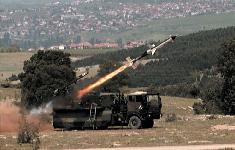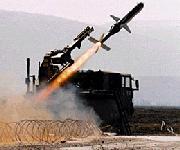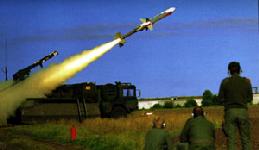FAS |
Military |
DOD 101 |
Systems |
Aircraft |
ROW ||||
Index |
Search |
Join FAS




CL-289 / AN/USD-502
The CL289 system comprises reusable drones which can fly on pre-programmed missions in the upper sonic range, as well as a fully mobile and rapidly deployable ground installation. The CL289, as part of the integrated army reconnaissance system as well as at corps and division level, implements situation reconnaissance, target location and classification as well as coverage of weapons effect. In March 1987, Canada, West Germany and France signed the CL-289 surveillance drone production contract, the largest defence export order ever won by a Canadian company. On November 29, 1990 the CL-289 drone system entered German Army service. The operational performance of the CL 289 system can be enhanced by the implementation of an adverse-weather capability and other relevant developments, i.e. for digital image evaluation, mission planning and GPS-based navigation, guidance and control systems. Thus, the new objectives can be attained, especially in view of the system's role within the rapid reaction forces, as is the case with Bosnia. The Defense and Civil Systems Business Unit of Daimler-Benz Aerospace AG (Dasa/ Munich) at Dornier GmbH in Friedrichshafen has developed the new SAR (Synthetic Aperture Radar) sensor as a miniaturized technology for drones. In this German-French cooperation program, called Sword (System for All-nweather Observation by Radar on Drone), Dornier's profit center Reconnaissance and Command Systems is working together with Thompson/CSF. The first flights with the small sensor (weight approx. 30 kilograms) provided SAR-images of an outstanding quality, where moving vehicles on the ground could also be detected.Specifications | |
|
Builder team : |
Drone CL 289 : Bombardier, DASA Dornier, Sagem PIVER ground system : Aerospatiale Matra |
|
In-service in the French Army : |
1993 |
|
Breadth / Length : |
1.32 m / 3.61 m |
|
Weight : |
220 kg |
|
Autonomy : |
30 min / 170 km radius |
|
Power plant : |
Turbo jet engine |
|
Maximum speed : |
720 kph |
|
Navigation : |
Programmed trajectory (inertial guidance, altimetry, doppler) |
|
Payload : |
Stereoscopic camera, infrared analyser, flight recorder, real time transmission of images from the infrared analyser to ground operators, from up to 70 km |
|
Composition of the complete system : |
PIVER system : programming and interpretation of reconnaissance devices flights 1 launching and programming unit and 1 or several drones Possible use of heliborne pods instead of drones, with the same sensors |
|
Major operational capabilities : |
Medium range night and day surveillance of the battlefield by photographic and infrared cameras Real time analysis of infrared images Operational even in very poor weather conditions |
|
Main user countries : |
Germany |
|
French Army inventory : |
55 drones en 4 units |
|
Typical mission |
30-mn 400-km flights at very low altitude allowing rapid and detailed evaluation of targets with transmission of high quality digital images |




Sources and Resources


FAS |
Military |
DOD 101 |
Systems |
Aircraft |
ROW ||||
Index |
Search |
Join FAS
http://www.fas.org/man/dod-101/sys/ac/row/cl-289.htm
Maintained by Robert Sherman
Originally created by John Pike
Updated Tuesday, September 21, 1999 10:18:15 AM